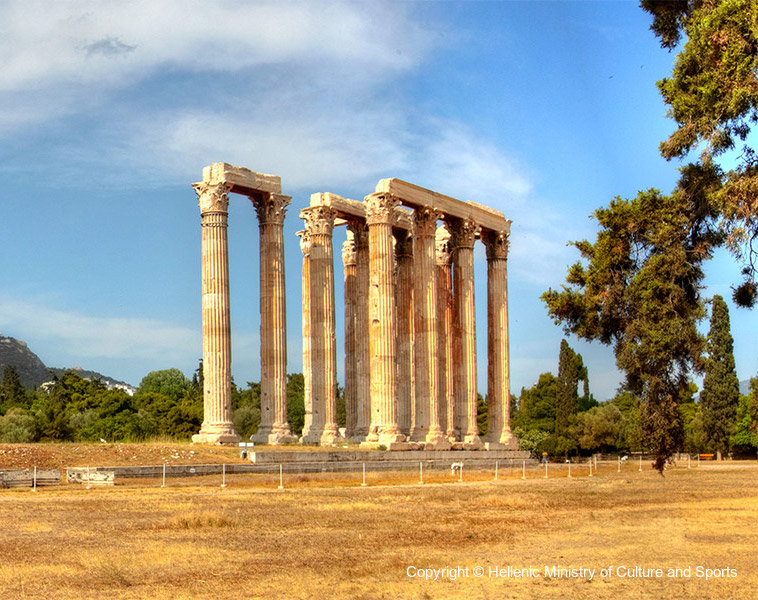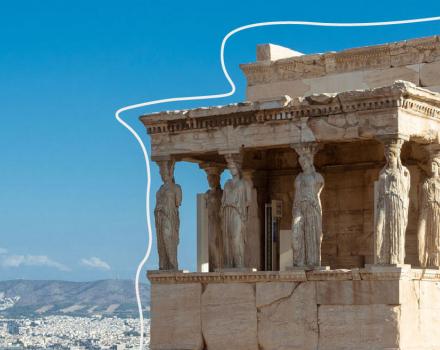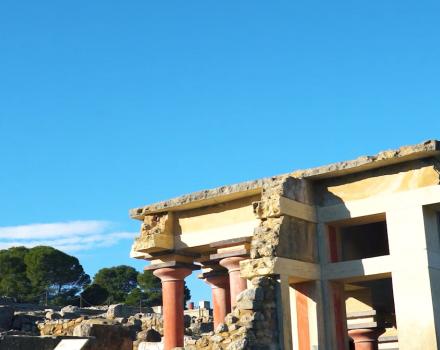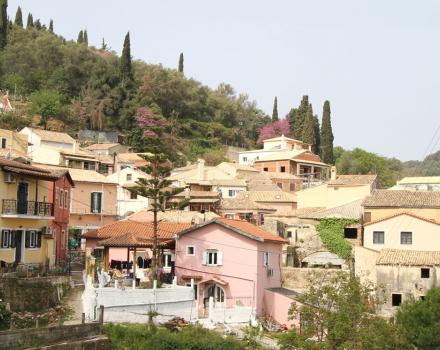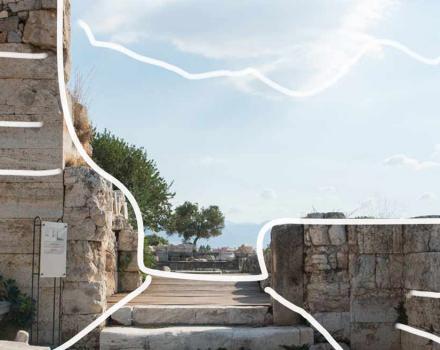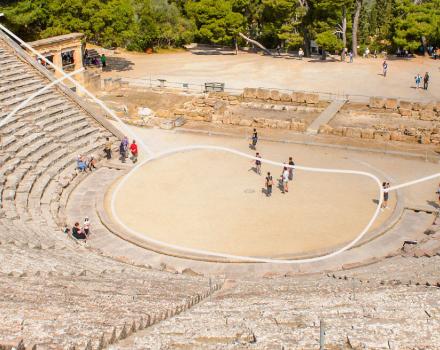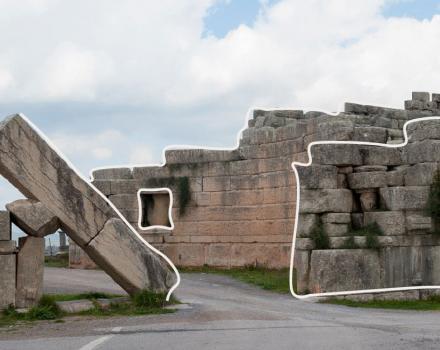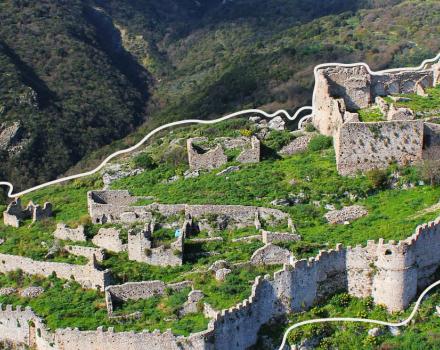Before Zeus devastated with flood the corrupted human nation, Deucalion, the son of Promitheus was the only one who was notified about it. Together with his wife Pyrrha, they constructed a ship, the one and only that rescued from the flood and according to a myth’s version, the ship grounded on the top of mount Parnassus. When they disembarked, they sacrificed to Zeus Phixios, protector of fugitives. Their piety pleased the father of gods who offered to fulfill their first wish. The couple asked the humanity to be reborn, as it happened. The rocks that Deucalion was throwing behind him as he was walking, transformed into men and those that Pyrrha was throwing, transformed into women. The first rock of Deucalion created the Greek man, the ruler of the Greeks.
Of the biggest of the ancient world
According to the tradition saved by the traveler Pausanias (2nd c. A.D.), Deucalion, as exchange for his salvation from the flood, established the Sanctuary of Olympian Zeus, one of the oldest and most important sanctuaries of ancient Athens. There, the temple of Olympian Zeus, one of the biggest in the ancient world, started to be built on 6th c. B.C. However, the Athenians have to wait for over six centuries until the completion of the brilliant temple, having as lead – constructors a tyrant, a king and an emperor.

The erection of the temple started by Peisistratus the younger, at 515 B.C. in the same place of the older, at early 6th c. B.C. According to the ambitious plan of Peisistratids, the poros and Doric temple has colossal dimensions so that to reflect their pride and authority. The construction works interrupted by the catalysis of tyranny at 510 B.C. The next months, several rebuilding attempts on the temple followed including the one of the Athenian orator and political Lycourgos, on the second half of the 4th c. B.C. His efforts were not successful.
The temple’s reconstruction was attempted again by the Syrian king Antiochus IV Epiphanes (from the Hellenistic kingdom of Seleucids) with the Roman architect Cossutius. The temple started to be built in the same dimensions as the old, but marble, and on the outer columns the Corinthian rhythm was developed. Ηowever, it remained incomplete due to the death of Antiochus.
The completion by Hadrian
The temple was finally completed by the philhellene emperor Hadrian, who inaugurated it on 131/132 A.D. The Hadrian temple, on Corinthian rhythm built by pentelic marble almost in the same giant dimensions of the poros, Doric previous one. It had 110.35 meters length, 43.68 meters width, two rows of 20 columns on the long sides and three rows of 8 columns in the narrow, 104 columns in total in peristasis. In the reminder document issued by the Athens Ephorate of Antiquities on occasion of the exhibition “Hadrian, Saviour and Builder” (Fethiye Mosque until July 31 2018) we read that exclusively about the columns of the temple "15,500 tons of marble were used. Quadruple amount from that was needed for the Parthenon columns ". Two large-sized statues of Zeus and Hadrian, worshiped together in the same altar, stood on the cella of the temple.
If you want to learn more about the Temple of Olympian Zeus and other city monuments with texts, videos, photos and 360- panoramas, visit YouGoCulture's Athens travel destination:
http://yougoculture.com/virtual-tour/athens
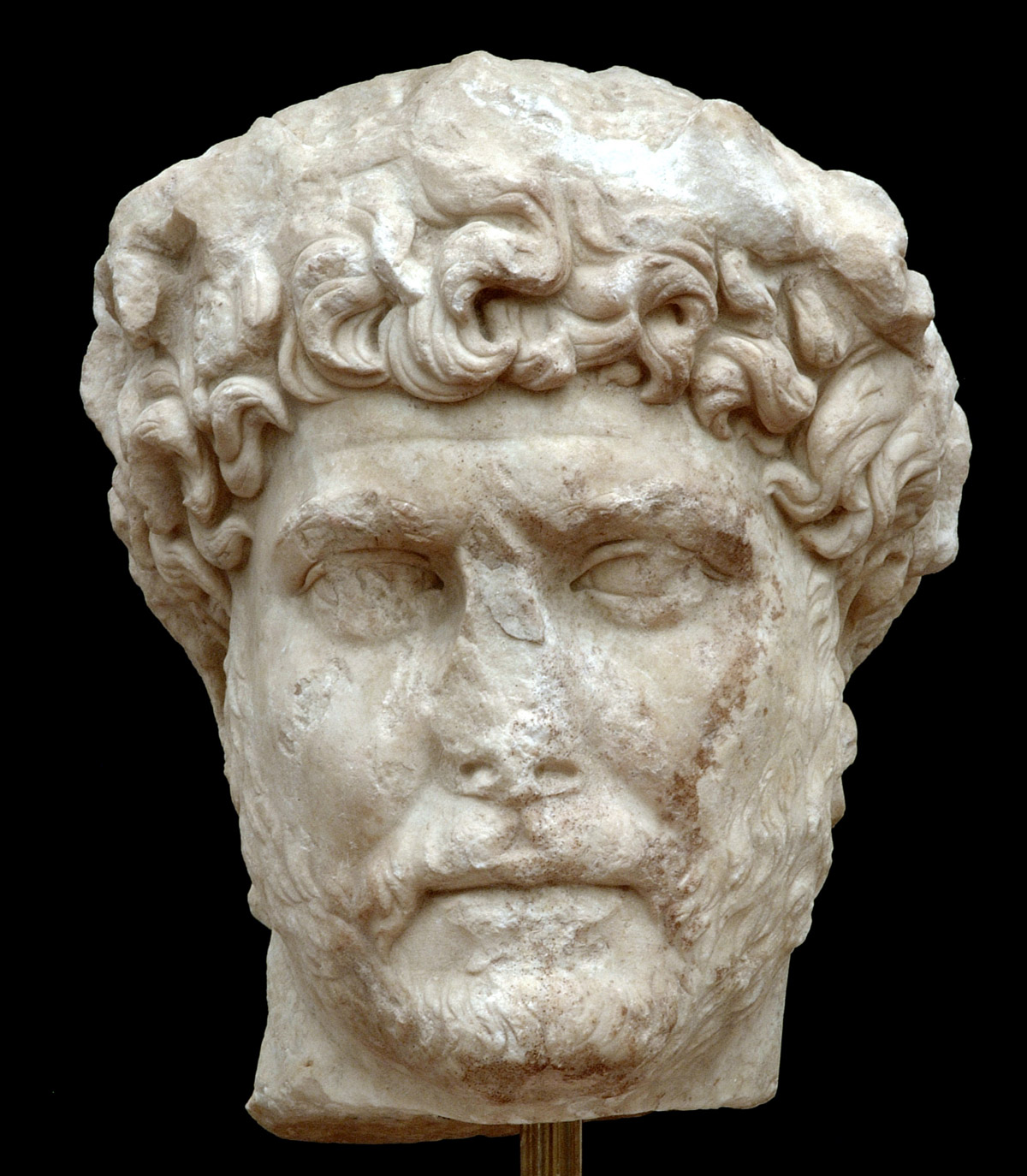
The dereliction of the temple began in the 5th century. In the brilliant monument located in the heart of Athens, today are preserved 15 standing columns, the famous "columns", while one is being saved by a severe storm in 1852.
